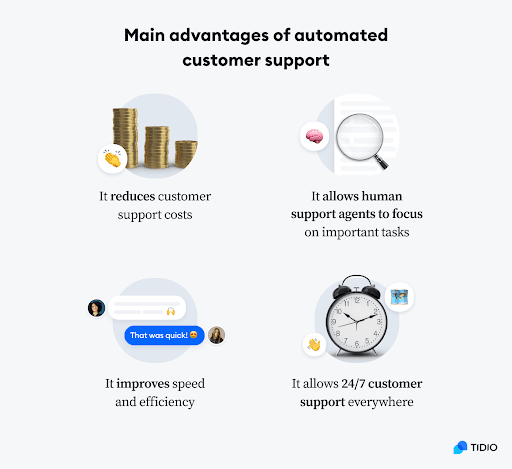4 Ways to Become a True Thought Leader

You’re not interesting simply because you run a company.
There. I said it.
While you may have incredible insight to share, so do the other C-level execs running companies in your category. Question is, how do you separate yourself as a trusted voice in the industry and use thought leadership as a business driver?
A survey of more than 3,000 B2B decision-makers found that the pandemic spurred an increase in the consumption of thought leadership content, but most of it was rated as low quality (e.g. doesn’t offer valuable insights). This may sound like bad news for a burgeoning thought leader, but it really means this: You need to say something beyond surface level, challenging industry norms and inspiring people to think differently.
The same survey found effective thought leadership can:
- Repair a brand reputation.
- Earn trust and credibility.
- Draw attention to meaningful topics not covered by newsrooms.
- Attract better talent.
And roughly half of decision-makers surveyed said after engaging with a high-quality piece of thought leadership, they’re at least sometimes likely to increase the amount of business they did with an organization or purchase a new product or service. Let that sink in – your customers may buy more of your stuff if they feel you are a trusted voice in the industry.
But how will you become a thought leader who can break through the noise and offer meaningful insight? It starts with understanding your audience and defining your narrative. From there, you must find your voice, build your audience and maintain consistency to be a meaningful part of the broader conversation.
No. 1: Define your narrative.
Becoming a true thought leader is all about building a personal narrative that resonates with your audience. The best way to start is defining the audience you are looking to influence in the first place. Whether it’s investors, talent or prospects, become laser-focused on how you can speak to their pain points and help solve their problems through a unique perspective that can’t be found anywhere else.
Finding something original to say is easier said than done.Try focusing your efforts on topics about which you are truly passionate and can offer a unique perspective. You can smell someone trying to jump on a trend bandwagon from a mile away. There’s nothing original about it. But if you have a willingness to share an authentic perspective about a particular topic, you’ll be able to add something new to the conversation — and the passion becomes obvious.
Building your personal narrative doesn’t mean you have to share intimate details of your life, but it does mean finding a comfortable level of transparency you are willing to share. You want to make people feel a certain way about the brand and you as its leader. There must be human elements woven into your thought leadership efforts. Whether it’s telling a personal story, sharing a relatable struggle or naming those who have helped shape you as a leader, making the audience feel a part of your “inner circle” is critical to being an effective thought leader.
As you consider the topics you’d like to weigh in on, remember that beyond a unique take, your readers will be looking for value. You can offer the lessons you’ve learned, mistakes that changed your outlook and meaningful experiences which helped you grow. Your ultimate goal as a thought leader isn’t to hype yourself up: It’s to add value to ongoing conversations, spur engagement and serve as a trusted resource.
No. 2: Find your voice. No, not one you like. Your own.
“The Great Resignation” reverberated across every part of work. Many people who left jobs did so to seek greater meaning in their work lives. There’s a greater demand for authenticity in and out of our workplaces. And as Gen Z joins the workforce, they bring a values-driven approach to their careers, skepticism toward corporations and a hunger for purpose.
At the same time, remote work at the height of the pandemic broke down long-established barriers between the personal and the professional. Let’s face it: Our workplaces are now often the same tables where we feed our children, have intimate conversations and nourish our inner lives.
It’s impossible to unring that bell. What you offer as a thought leader — especially when you’re starting the journey — has to meet this unprecedented moment, and critical to developing credibility as a thought leader is finding and owning your unique voice.
No one has your same perspective, your sense of humor, your exact fast-food order when no one’s looking. Also, no one has your voice. How freeing! You don’t have to speak for anyone else or emulate what you think makes a great thought leader.
Even if you admire certain storytellers and thought leaders, you don’t have to don their tone or parrot their talk tracks to grow into a thought leader. Taking the time to reflect and consider your own voice, including its idiosyncrasies and unique ability to connect with others, will give you a foundation to build content reflecting your lived experience, personality and expertise.
Tips for finding your thought leadership voice
Your voice is a mix of your experience and knowledge, conveyed through your tone, the words you choose and your delivery cadence. You might be able to identify these features of some of your favorite speakers, but you’ll have to do some research on yourself to nail down a voice that you can use with consistency throughout your thought leadership efforts.
Read your authored blogs and LinkedIn posts. Listen to recordings of yourself from speaking engagements, podcasts and even company events. Those will all give you a sense of the rhythms and speech patterns you use when telling a story or inspiring your colleagues. Once you’ve identified some of what makes your voice yours, strengthen that muscle with practice.
No. 3: Test and evangelize your narrative.
Start small with what you can control, like your blog or personal social channels.ee if your talk track and voice resonates enough for people to engage. These conversations will supply you with feedback and help you stretch your boldness and confidence.
Remember, it’s A-Okay if the audience doesn’t agree — the presence of a vocal minority means you are accomplishing what you set out to do, which is to provoke thought and start a discussion.
Then, begin offering your insights to a broader audience through opportunities like speaking at conferences, placing contributed content in relevant publications, or taking to the podcast circuit. Heck, you can take it step further and launch your own podcast. I host a podcast called SaaS Half Full, and sitting down with peers in the SaaS marketing industry helps me not only build an audience, but also test out my narrative and voice.
Listening is as essential as speaking to gain a larger audience, as becoming a thought leader doesn’t stop at your ideas alone. You need relevant fuel to develop perspectives and form opinions on topics at the forefront of people’s interests.
You can succeed in your thought leadership by taking a bold or contrarian view. But to do that, you’ll need working knowledge about the topics and trends newly taking shape.
No. 4: Build momentum with consistency.
Once you’ve found your point of view, nailed down your voice and begun expanding your audience, you’ll need to build consistency.
You’d be disappointed if the latest episode of your favorite show didn’t drop as scheduled, right? Your audience, too, will rely on hearing from you as they scroll on social media, check their inbox or listen to podcasts. It’s better to start small and grow consistently than throw yourself into unattainable goals across a dozen platforms and ghost your audience when it all becomes too much.
Think about your bandwidth and the channels where your audience spends most of their time. Then give yourself attainable goals for the most important channels (personal socials, podcasts, personal blog or Medium, speaking opportunities or a newsletter). Establish a posting cadence, whether it’s once a week or more. As you reach those goals, add a platform and adjust your cadence as needed.
Become the Thought Leader You Were Meant to Be
Being a true thought leader brings a human element to your business so that you’re seen as a person, not just an entity. It also provides an opportunity to be sought out more often for commentary, allowing you to share your perspective on important topics and issues more regularly. Instead of trying to emulate another thought leader’s moves, embrace your personal passions, voice and point of view … and get that vocal minority talking.
The post 4 Ways to Become a True Thought Leader appeared first on Content Marketing Consulting and Social Media Strategy.












